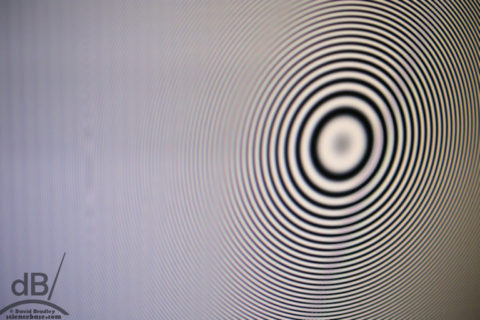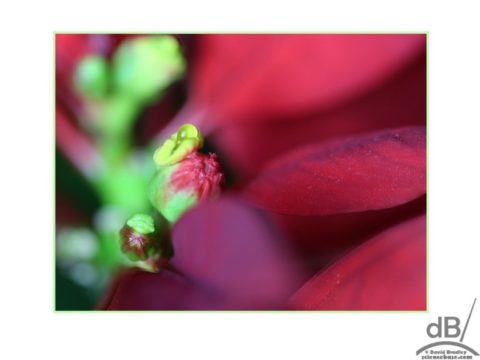I was given a nice 1:1 macro lens for Christmas (Tamron, 90mm f/2.8). It was giving excellent results out of the box, but having realised that my DSLR does allow one to tweak the autofocus micro adjustment in-camera. I thought I would calibrate it as I had with my 600mm Sigma zoom (albeit that was done off-camera with a USB adapter). There’s a much easier way to verify that your lens isn’t back focusing or front focusing with lenses of shorter focal length as you don’t have to be so far away from the calibration targeting; at least 50 times focal length, which for a 600mm lens is 30m but for a 90mm lens is just 4.5m. I also opted for the moire fringing method described here.

Basically, you set your camera on a tripod, manually focus in Live View on a pattern on your computer screen, then switch to autofocus in the viewfinder and watch how much and in which direction the focus ring moves to “focus”. Your camera may be front or back focusing and for most DSLRs above the prosumer level from Canon and Nikon you can micro adjust this to fix it and make the AF sharper. If I remember rightly, my DSLR will remember micro adjustment settings for 42 different lenses, which is an order of magnitude than I possess so plenty of data slots.
The bottom line is that if your camera allows you to, you should calibrate your lenses in-camera. There will almost always be tiny discrepancies between what the camera thinks the lens is focused on and what it is actually focused on forward or back. My 50mm prime lens needed a -2 adjustment, whereas the Tamron macro needed +10 (out of a range of -20 to +20). This was sufficient to bring the lenses up to snuff. With these adjustments, there is no focus ring movement from manual focus to autofocus. They’re calibrated.
It’s going to be harder to calibrate the big zoom lens as our garden is a lot less than 30m even across its diagonal and I also don’t fancy the chances of the camera nor a laptop with the moire pattern in this rain, so I’ll leave all that for another day.
Meanwhile, here’s another macro shot of the poinsettia cyathia, this time carried out with focus bracketing. It’s a useful technique, but I can see some artefacts where the leaves and/or camera moved ever so slightly between frames. Or, it’s just a side effect of the way Picolay works with a focus stack of images.

These micro-adjustments and calibration can make only a tiny and sometimes barely perceptible difference to sharpness at 100%, but useful if you’re going to enlarge or do a really tight crop. Of course, given the awful compression websites like Facebook apply when you upload to them, it might seem pointless. Indeed for some uploads, it’s probably fine to just apply an unsharp mask to areas of interest in a photo. But, given that the micro-adjustments are relatively easy to do, I’d say do them anyway.